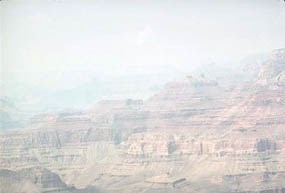
Today, many laws have been passed and programs put in place to protect and restore the natural wonders of the Grand Canyon in order to, "leave them unimpaired for the enjoyment of future generations." Park scientists use integrated pest management techniques to eradicate and relocate non-native and pest species. A coal-fired power plant in Page has installed scrubbers in smoke stacks to reduce air pollution. Fences have been erected along the park boundaries to keep out trespass cattle, and hikers and river runners are being educated on the proper methods of human waste disposal. Stakeholders from federal and state agencies, Native American tribes, and environmental and recreational organizations have partnered to create the Glen Canyon Dam Adaptive Management Program to recommend modifications to dam operations to benefit natural and cultural resources in Grand Canyon National Park and Glen Canyon National Recreation Area. Special no flight zones have been created to preserve natural quiet in remote areas of the park and prescribed burning and forest thinning are natural resource management tools used to restore forest landscapes and reduce wildfire hazards. |
Last updated: August 25, 2022
